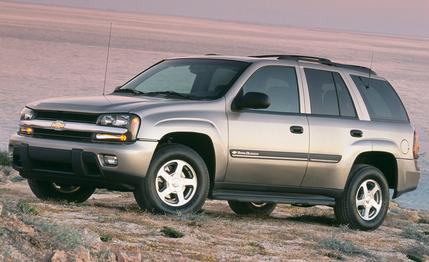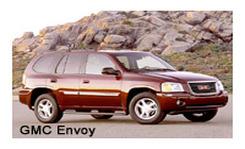
 First Drive Review
First Drive Review
Even in the Cult of Brand that is now the state religion of General Motors, there are apparently no sacred cows.
During a recent introduction of three new GM sport-utility vehicles in deepest Baja California, we stood dutifully observing the rites of the Cult of Brand under an unrelenting Mexican sun. If you embrace the tenets of Brand Identity Marketing, you believe that buyers identify with distinguishing characteristics and lifestyle statements that are attributed to mechanically similar or identical vehicles. For instance, Chevy buyers "want a vehicle to take them to activities"; Oldsmobile drivers "want their own space." And GMC owners "want professional-grade equipment." When we ask what "professional grade" means when it applies to the cloning of a Chevy truck, GMC will answer only in Esperanto. Certain things are not meant to be known by outsiders.

But we digress. We were in Mexico to check out these three new sport-utes from GM. (Or was it one new sport-ute in three different guises?) The weather gods were certainly with General Motors -- not a cloud appeared on the horizon for three days and nights. But back in Detroit, a storm of another kind blew into town. At almost the same moment the marketers, dressed in carefree Hawaiian shirts, were explaining how Oldsmobile owners "really like to drive," GM grand pooh-bah Rick Wagoner was making funeral arrangements for the entire division, a sacrifice to the financial gods. General Motors marketing mavens chose the cost-effective way of differentiating the same vehicle among several divisions; they reduced the number of divisions begging for the same basic vehicle.
And that's exactly what General Motors is offering with the Chevrolet TrailBlazer, GMC Envoy, and Oldsmobile Bravada: one fine new SUV from three different divisions -- at least until Olds is put down in a couple of years.
They share the same engine. They share the same ladder frame. They share the same suspension. Even the shock tuning of these three vehicles, although described as appealing to distinctly different shoppers and "developed with divisional brand identities in mind," is identical.
The most significant difference among these sport-utes is styling. According to Bill Davis, the lead designer of all three vehicles, 70 percent of the body panels on each of the sport-utes is different. As a Chevy, the TrailBlazer (formerly the Blazer) gets the traditional butch truck treatment. It's square, broad, and brawny. The GMC Envoy (an upgrade on the now defunct Jimmy) aims for a more sophisticated look, with an angular snout and stacked headlamps. The Bravada appears to have had an Aurora nose grafted onto its front end, and it also appears to have a short life expectancy. At this point, GM will sell the Bravada for at least two years. Inside, the three trucks have different trim but the same layout.
The distinct sheetmetal differences are, at least, convincing variations on a theme. Prior to this three-truck debut, the GM triplets were distinguished only by trim and badges.
In every respect these new mid-size GM trucks make forgettable the vehicles they replace. GM claims that this new truck, the first with entirely hydroformed side rails for strength and weight savings, is 270 percent stiffer than the Blazer/ Jimmy generation it replaces. (This, of course, means that the previous mid-sizer had no structure at all.) The new trucks feel remarkably solid, even on the neglected roads of the Baja peninsula. The stiffer frame allowed GM to soften the suspension settings to provide a more compliant ride without sacrificing handling ability. The stiff frame also allows for smoother, quieter driving.